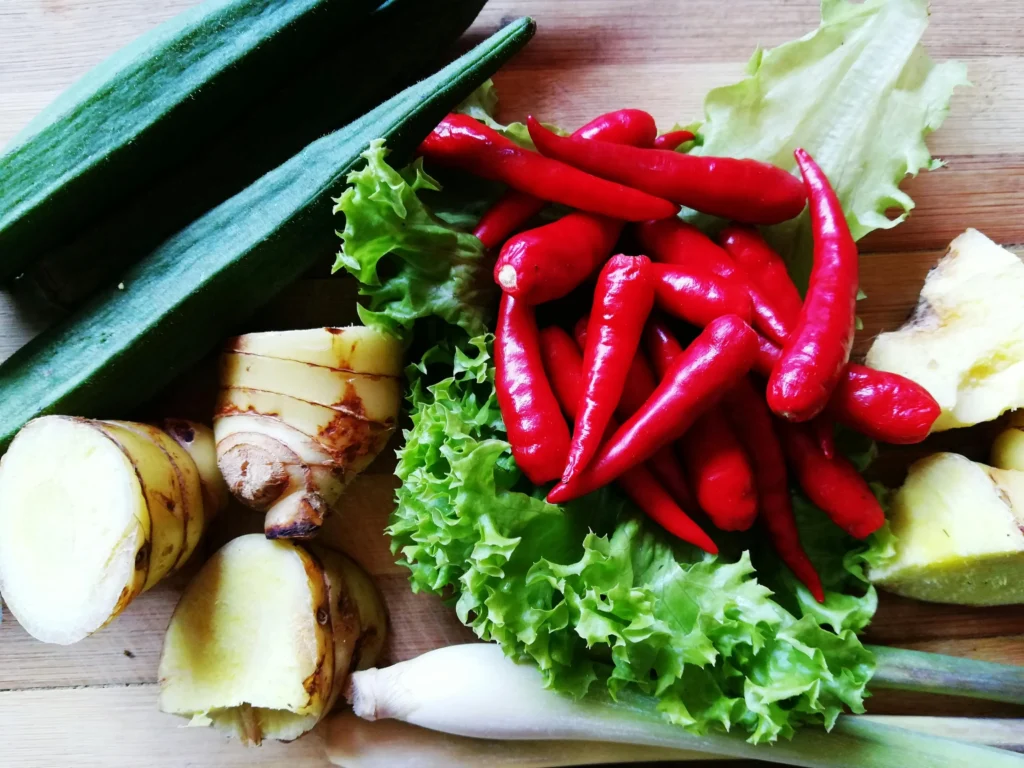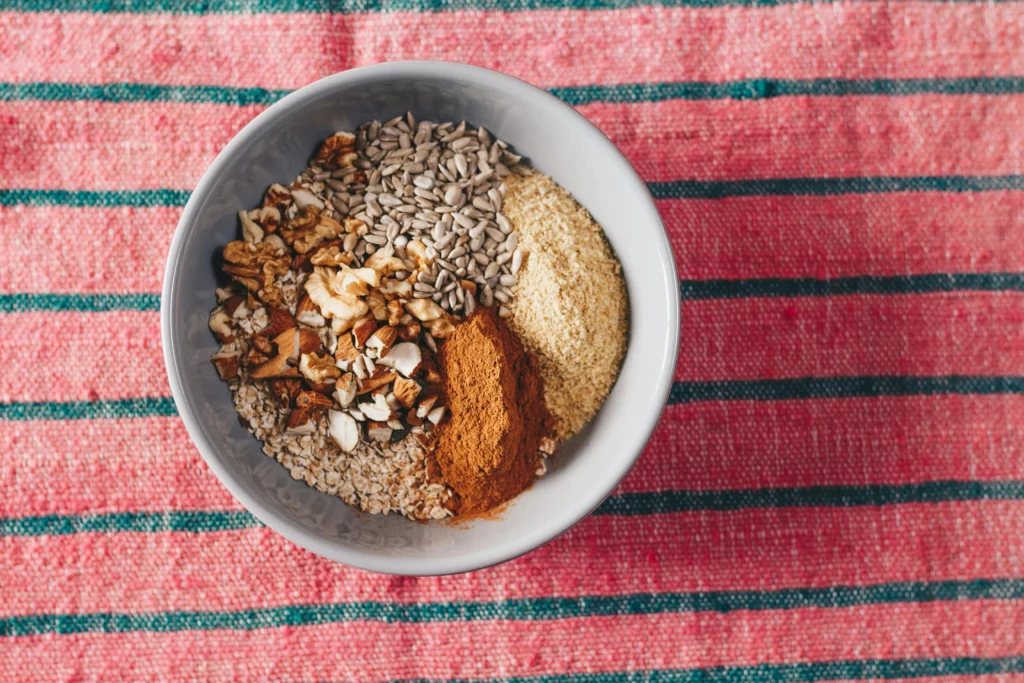Table of Contents

Winter is a season synonymous with cold temperatures, snow-covered landscapes, and festive cheer. However, as the mercury dips, so too can our energy levels and overall well-being. One of the most effective and enjoyable methods to stave off the winter chill is through our diet. Consuming certain “warming foods” can not only provide comfort but also boost our metabolism and immunity, making them our natural defense against the harshness of winter.
In this article, we will explore ten warming foods that can help keep you cozy and healthy during the cold months. By incorporating these foods into your meals, you can create nourishing dishes that not only satisfy your taste buds but also fortify your body against winter ailments.
1. Ginger: The Spicy Wonder

Ginger is a well-known warming food that has been treasured for its medicinal properties for centuries. Rich in antioxidants and anti-inflammatory compounds, ginger helps improve circulation, making you feel warm from the inside out. Whether consumed as a tea, added to soups, or incorporated into stir-fries, it enhances flavors and boosts your immune system.
Benefits of Ginger
- Calming Digestive Issues: Ginger soothes an upset stomach and helps in digestion, which is particularly beneficial during the holiday season when rich foods are abundant.
- Anti-Inflammatory Properties: It can aid in reducing inflammation, which is essential during winter when colds and flus are frequent.
- Natural Pain Reliever: Ginger has properties that may help alleviate muscle soreness, perfect for those winter sports enthusiasts.
Recipes to Try
- Ginger Tea: Simmer fresh ginger slices in water for a comforting drink.
- Ginger Stir-Fry: Toss ginger into your favorite veggie stir-fry for a zesty kick.
2. Sweet Potatoes: The Hearty Comfort Food
Sweet potatoes are not only delicious but also packed with nutrients. They are rich in vitamins A and C, fiber, and antioxidants, making them excellent for boosting your immune system. Their natural sweetness and grounding properties make them a perfect warming food during the colder months.
Benefits of Sweet Potatoes
- High in Fiber: They aid in digestion and help keep you feeling full longer.
- Antioxidant-Rich: Their bright orange color indicates a high beta-carotene content, supporting overall health.
- Versatile Ingredient: Sweet potatoes can be roasted, mashed, or made into soups.
Recipes to Try
- Roasted Sweet Potatoes: Dice and roast with olive oil and your favorite spices.
- Sweet Potato Soup: Blend cooked sweet potatoes with vegetable broth for a creamy soup.
3. Cinnamon: The Aromatic Spice
Cinnamon is a beloved spice that not only adds warmth to foods but also offers significant health benefits. Known for its ability to regulate blood sugar levels, cinnamon can help prevent energy crashes during the day, making it a great addition to your winter diet.
Benefits of Cinnamon
- Antimicrobial Properties: It can help fight off infections and boosts overall immunity.
- Regulates Blood Sugar: Keeps your energy stable, preventing mid-afternoon slumps.
- Mood Booster: The warm scent of cinnamon is also known to have mood-enhancing effects.
Recipes to Try
- Cinnamon Oatmeal: Stir cinnamon into your morning oatmeal for added flavor and warmth.
- Cinnamon-Spiced Coffee: Add a dash of cinnamon to your coffee for a delightful twist.
4. Garlic: The Immune Booster
Garlic is often referred to as a superfood due to its extensive health benefits. Its warming properties are perfect for winter, and it plays a crucial role in boosting the immune system. Enjoyed in countless culinary applications, garlic can enhance the flavor of your dishes while keeping you healthy.
Benefits of Garlic
- Rich in Allicin: This compound offers various health benefits, including fighting infections and lowering blood pressure.
- Anti-inflammatory: Helps reduce the severity of colds and flus.
- Heart Health: Contributes to cardiovascular health by improving circulation.
Recipes to Try
- Garlic Roasted Vegetables: Toss your favorite veggies with garlic and herbs before roasting.
- Garlic Soup: Simmer garlic with broth and cream for a comforting soup.
5. Bone Broth: The Traditional Healer
Bone broth is a traditional remedy rich in nutrients, especially collagen, that can provide warmth and comfort on a cold day. It’s known for its healing properties and is highly beneficial for gut health, immunity, and inflammation reduction.
Benefits of Bone Broth
- Nutrient-Dense: Packed with vitamins and minerals, it provides essential nutrients to support health.
- Gut Health: The gelatin in bone broth supports gut lining and digestion.
- Hydrating: A warm cup of bone broth helps to keep you hydrated, which is crucial during the winter months when the air is dry.
Recipes to Try
- Classic Chicken Bone Broth: Simmer chicken bones with vegetables and herbs for a nourishing broth.
- Bone Broth Ramen: Use bone broth as a base for a hearty ramen noodle soup, adding your favorite toppings.
6. Nuts and Seeds: The Nutrient Powerhouses

Nuts and seeds are excellent sources of healthy fats, protein, and essential nutrients that provide warmth and energy during winter. They are rich in vitamins E and magnesium, which help in maintaining overall health and well-being.
Benefits of Nuts and Seeds
- High in Healthy Fats: They promote satiety and provide a steady source of energy.
- Rich in Protein: Essential for maintaining muscle mass, especially during colder months when we might be less active.
- Vitamins and Minerals: Packed with antioxidants and minerals that support immune function.
Recipes to Try
- Nut Butter: Spread almond or cashew butter on whole-grain bread for a nutritious snack.
- Seed-Studded Granola: Make your own granola with oats, nuts, and seeds for a warming breakfast option.
7. Spicy Peppers: The Heat Factor
For those who can handle heat, spicy peppers can be a game-changer during the winter months. They contain capsaicin, which is known to increase body temperature and circulation, effectively warming you from the inside out.
Benefits of Spicy Peppers
- Boosts Metabolism: Capsaicin helps increase metabolism, making it easier to stay warm and energetic.
- Pain Relief: Topical application of capsaicin has been used to relieve pain and inflammation.
- Flavor Booster: They can enhance the taste of a variety of dishes, ensuring you never get bored.
Recipes to Try
- Spicy Chili: Make a hearty chili with ground meat and your choice of spicy peppers for a warming meal.
- Hot Pepper Sauce: Blend peppers with vinegar and spices for a homemade hot sauce to spice up any dish.
8. Apples: The Versatile Fruity Delight
Apples are a staple fruit during the colder months, offering a comforting sweetness and a myriad of health benefits. They are rich in fiber, vitamins A and C, and antioxidants, making them a great addition to winter diets.
Benefits of Apples
- High in Fiber: Promotes digestive health and keeps you full.
- Supports Heart Health: The antioxidants in apples may help lower cholesterol and improve heart health.
- Versatile Ingredient: Can be eaten raw, baked, or cooked into dishes.
Recipes to Try
- Baked Apples: Core apples and fill with cinnamon and nuts, then bake until tender.
- Apple Cider Hot Toddy: Warm apple cider with spices for a cozy drink.
9. Dark Leafy Greens: The Nutrient-Rich Staples
Leafy greens such as kale, spinach, and collard greens are often underrated in the winter. While they might be associated with summer salads, these greens are full of essential vitamins, minerals, and antioxidants, providing vital nutrients during the winter months.
Benefits of Dark Leafy Greens
- High in Vitamins: Rich in vitamins A, C, K, and folate, boosting immunity and overall health.
- Antioxidant Properties: Help combat oxidative stress and inflammation in the body.
- Versatile: Can be used in soups, stir-fries, and smoothies.
Recipes to Try
- Kale Soup: Simmer kale with vegetables and beans for a hearty soup.
- Sautéed Greens: Quickly sauté greens with garlic and olive oil for a simple side dish.
10. Oats: The Breakfast Champion

Oats are a classic winter breakfast choice, providing warmth, comfort, and sustained energy. They are rich in fiber, specifically beta-glucans, which help regulate blood sugar levels and maintain heart health.
Benefits of Oats
- Sustained Energy Release: The complex carbohydrates in oats provide lasting energy throughout the day.
- Digestive Health: High fiber content promotes healthy digestion.
- Versatile Base: Oats can be prepared in numerous ways, from sweet to savory.
Recipes to Try
- Overnight Oats: Combine oats with yogurt and your favorite toppings for a ready-to-eat breakfast.
- Warm Oatmeal with Toppings: Cook oats with water or milk and top with fruits, nuts, and spices.
Conclusion
As winter sets in, the need for warming foods becomes increasingly essential for maintaining health and well-being. Incorporating these 10 warming foods—ginger, sweet potatoes, cinnamon, garlic, bone broth, nuts and seeds, spicy peppers, apples, dark leafy greens, and oats—into your diet can significantly enhance your body’s natural defenses against the winter chill. These foods not only provide physical warmth but also nourish your body with essential nutrients, keeping your immune system robust during the cold months.
Creating Warming Meals
Incorporating warming foods into your meals doesn’t have to be complicated. Here are some easy ways to create hearty and warming dishes for winter:
- Soups and Stews: Start with a base of bone broth or vegetable broth and load it with seasonal vegetables, proteins, and grains. Adding warming spices like ginger, garlic, and cinnamon can amplify the flavors and health benefits.
- Baked Dishes: Roasting vegetables like sweet potatoes, carrots, and root vegetables in the oven brings out their natural sweetness and nutrients. You can toss them in olive oil and seasonings before baking for a flavorful side dish.
- Warm Breakfasts: Oats make for an excellent breakfast base; consider adding fruits, nuts, and warming spices. For added protein, mix in some yogurt or nut butter.
- Snack Ideas: Keep nuts and seeds handy for quick snacks. Mixing them with dried fruits creates an energizing trail mix that can easily be packed for on-the-go nourishment.
- Herbal Teas: Beyond ginger, consider other herbal teas that can warm you from the inside. Peppermint, chai, and turmeric tea are excellent choices for both flavor and health benefits.
Mindful Eating
The way we eat can also influence our feeling of warmth and comfort. Here are tips to practice mindful eating during the winter:
- Savor Your Food: Take time to enjoy each bite. Savoring your meals can enhance your overall dining experience and help you feel more satisfied.
- Eat Warm Meals: Aim for warm meals and beverages, especially in the morning and evening when it’s cold outside. This practice helps maintain your body temperature and offers a sense of comfort.
- Stay Hydrated: Even in winter, hydration is vital. Warm herbal teas or warmed lemon water can keep you hydrated and warm at the same time.
A Balanced Approach
While the focus is on warming foods, it’s crucial to maintain a balanced diet. Try to include a variety of colors on your plate, representing different nutrients. This balance allows your body to receive an array of vitamins, minerals, and antioxidants, which are necessary to fight off winter illnesses.
Conclusion: Embrace the Winter Season
The cold months are a wonderful time to enjoy hearty meals and focus on nurturing your body and mind. By embracing these 10 warming foods, you are not only safeguarding your health but also creating comforting traditions around food that can be shared with family and friends.
As you sit by the fire or wrap yourself in a warm blanket, let the power of these tasty, nutritious foods be your companion against the winter chill. Empower yourself with the knowledge of what nourishes you, and let this season be filled with warmth, health, and joy through every meal you create.
By prioritizing warming foods in your winter diet, you’re taking a proactive step toward embracing the season’s beauty. So, gather your favorite recipes, stock your kitchen with these nourishing ingredients, and enjoy the cozy delights of winter cooking. Here’s to a warm and healthy winter ahead!
You Might Like: 7 Natural and Healthy Ways to Color Your Food
